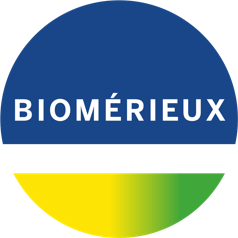
In conversation with Xavier Nouvelot: This article is part of a new series in which bioMérieux Canada’s General Manager connects with key industry experts and healthcare innovation partners on topics that matter most in the rapid diagnostics and health informatics fields.
How does a health tech company take their infection surveillance software and make it the favoured tool for tracking the COVID-19 pandemic within an entire hospital network? BioMérieux Canada’s Xavier Nouvelot speaks to Lumed’s Chief Medical Officer Louis Valiquette about how Lumed utilized the rapid reporting capabilities of their ZINC infection surveillance software to develop a new COVID-19 module now in use at CIUSSS de l’Estrie – CHUS, which includes all the hospitals from the Estrie administrative region and two in the Montérégie region. bioMérieux truly believes in this Canadian health tech start-up and plans to expand Lumed’s unique capabilities across Canada and internationally.
XN: Louis, your ZINC COVID-19 module was developed and implemented very quickly to monitor data from the entire population in Quebec’s Estrie regional county municipality. How did you achieve this?
LV: Yes, it took about two weeks for the Lumed team to get the first version of the module up and running. We update it weekly based on our end-user’s needs, from hospital executives to researchers and front-line workers. Our ZINC infection prevention and control (IPC) software has always featured the core component of any infectious disease outbreak management strategy—the ability to give hospitals rapid access to data.
In a hospital, the COVID-19 module offers real-time alerts of positive patients. End-users are notified of their location within the hospital, whether they have been in contact with other patients or hospital staff and receive recommendations on how to treat those patients with a tailored workflow. The software continuously generates follow-up data, showing whether the patient has recovered or not and shares location information with other regional hospitals. At the end of the implementation process, ZINC will extend its reach outside the Estrie region to a total of 1,100 beds and a population of more than 500,000 people, by including two additional acute-care centers (Haute-Yamaska and La Pommeraie).

XN: Why has the use of the COVID-19 module at the CIUSSS de l’Estrie – CHUS hospital network been a success?
LV: COVID-19 quickly became a regional problem. At Centre Hospitalier Universitaire de Sherbrooke (CHUS), we were fortunate to have all patient data, inclusive of lab results from other hospitals in the CIUSSS de l’Estrie – CHUS network, being collected in just one week and inputted into our system.
Centralizing data allowed us to provide regional surveillance and information for the entire Estrie region that would have otherwise been unsuccessful. The COVID-19 module requires a constant stream of raw data in order to monitor the region. The more it receives the more relevant it becomes. “learn”—. This customized algorithm enables all end-users to access the precise data they need as quickly as possible. Presented in a user-friendly and modifiable dashboard, end-users can showcase their expertise by reviewing comprehensive information quickly, enabling them to make explicit decisions.
XN: The capabilities of the Lumed software at CIUSSS de l’Estrie – CHUS during COVID-19 have successfully supported end-users’ work during this unprecedented time. What does your team plan to do with the key learnings and how do you think that will impact the future of Lumed?
LV: Indeed, and we are still learning and problem-solving with the data we receive daily. In the near future, we want to implement our COVID-19 module at other hospital networks across Canada, giving all end-users the opportunity to access information the way the teams have been successfully able to within CIUSSS de l’Estrie – CHUS.
As well, we have embarked on a partnership with two renowned academic centres in Quebec, and plan to utilize feedback we receive from end-users to identify opportunities to improve our algorithms using machine learning. We are very interested in the integration of learning capabilities to identify automatic improvements. More to come!
XN: You and I both believe that collaboration and partnerships within the healthcare industry are the keys to success. Over the past few years, it’s been a real pleasure to work with you and the Lumed team and watch you do outstanding work. What made you seek this unique Franco-Canadian partnership?
LV: In the early days, we knew we were doing something really innovative within our hospital-based research. We knew little about bioMérieux’s intentions to build a partnership with a company like ours that provides stewardship solutions. An unexpected meeting at a Quebec conference, with bioMérieux’s Chief Medical Officer Mark Miller, gave us the opportunity to showcase our work. Your company truly believes in the long-term potential of our work and the ability for it to make an impact worldwide, combined with the benefits that come with stewardship software elevating bioMérieux’s diagnostic solutions.
XN: I absolutely agree that your unique software and its ability to analyze data complements our goal of providing the best diagnostic solution in the world. I’m convinced that by combining our innovations and pioneering mindset, we will help the Canadian healthcare system fight COVID-19.
LV: We support your goal of understanding pathogen profiles as fast as possible to prevent the spread of infectious diseases. You are pioneers in seeing the importance of magnifying the impact of test results produced in labs to offer real-time benefits to all end-users, and Lumed’s products fit exactly with this objective. On behalf of the Lumed team, I can confidently say that this is just the beginning of a very bright and exciting future.

Leave a Reply